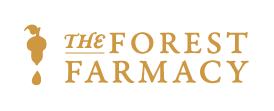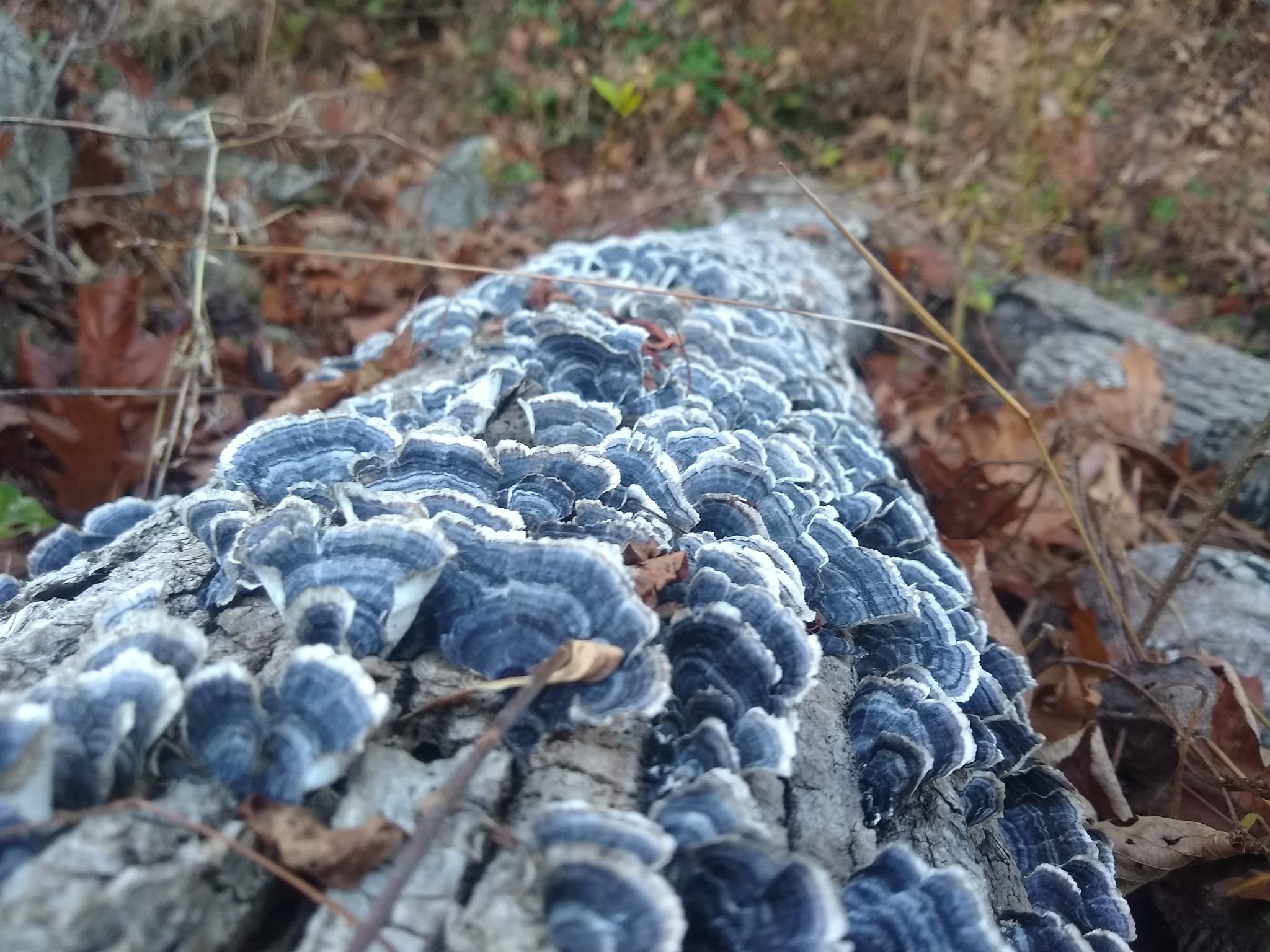Turkey Tail Mushroom Benefits & Identification
Turkey Tail mushroom is a potent medicinal mushroom that has become known for its cancer-fighting properties the world over. If you’re interested in learning more about its medicinal properties, how to identify it when foraging, and how to make medicine with it once you find it, keep reading!
Turkey Tail mushroom is a very widespread mushroom across the planet. It occurs in just about every habitat, with the exception of the Arctic and the Antarctic. It grows very commonly in highly forested areas like boreal forests, temperate forests, and tropical rain forests. It can be found on large, dead trees, even on the smaller limbs. It is commonly found on most hardwood trees including oak, birch, maple, beech, ash, wild cherry and holly.
Turkey Tail is a persistent annual polypore, which means that it grows new mushrooms every year from the same tree. The previous years’ mushrooms may likely still be visible but will be too old to use for medicinal purposes. The mycelium stays in that log up to a few years until it has eaten up as much of the available cellulose and lignin as it can while competing with other fungi.
Turkey Tail mushrooms are relatively easy to identify, especially once you’re familiar with some of the look-alikes (it can even help to have some close by to compare). Many people think you can find them year-round and that's definitely true; however, once the spore-producing-surface or hymenium has started to turn brown and they're no longer bright, clean, and white in appearance, you don’t want to harvest them- you only want to harvest the fresh mushrooms.
Depending on where you are, you may be able to go out into the forest and find Turkey Tail year-round. Anywhere you’ve found Turkey Tail previously is a good place to keep checking; similarly, if you come across some Turkey Tail that’s a bit too old to harvest, keep checking back throughout the year because you’re likely to find new mushrooms growing at some point. Here in the Southern Appalachians where we are, specifically in zone six in Western North Carolina, we typically find them growing during the spring and the fall. In other parts of the world, you may find them at different times of the year.
Turkey Tail Mushroom Identification
Turkey tail has a few look-alikes so be aware that what you are seeing may not be Trametes versicolor or Turkey Tail mushroom. Trametes meaning ‘one who is thin’ and versicolor meaning ‘many colors’ or ‘various colorings’. It is this trait of various colors that can make Turkey Tail mushrooms hard to identify to begin with. The colors of Turkey Tail will be everything from brick reds to steel blues, grays, and everything in between, including varying shades of tans and browns; these colors will be found in bands on the cap.
The key thing to look for when making a Turkey Tail mushroom identification is the feel of the hymenium or spore producing surface. On a Turkey Tail mushroom the hymenium will be slightly rough when you touch it because there are tiny pores.
Some mushrooms that are commonly mistaken for Turkey Tail mushroom are parchment fungus, false Turkey Tail, and violet polypore. Here in the southern Appalachians there seems to be more violet tooth polypore than Turkey Tail or false Turkey tail. Something to keep in mind when foraging is that parchment fungus is very, very small. Turkey Tail mushrooms can be small, but they oftentimes occur en mass. This means that when you do find them, you'll likely find a lot of them. Sometimes this isn't the case, but most of the time it is.
Medicinal Uses of Turkey Tail Mushroom
Now that you’ve found some Turkey Tail, what can you use it for? There are a lot of research papers that have been produced on Turkey Tail, and most of them have focused on the cancer-curing properties of this heavy-hitting mushroom.
Turkey Tail mushroom contains PSK or polysaccharide krestin. PSK was the first mushroom-derived anticancer drug approved by the Japanese government. They started experimenting with PSK in the 1960s, and it was very successful in treating and extending the life of cancer patients. Another thing that PSK does is prolong the activity of antibiotics and increase resistance to bacterial infection. In that sense, it works in a synergistic manner in cases of MRSA and other antibiotic-resistant bacterial strains.
PSK is also an antiviral. Anyone who's dealing with any type of viral load, whether that be herpes, HIV, or something else, could potentially see some improvements with Turkey Tail mushrooms. Turkey Tail works by modifying the viral receptor, which, in the case of HIV, stops the HIV from binding with lymphocytes. PSK also potentially helps people with chronic fatigue syndrome.
In addition to those amazing Turkey Tail benefits, it is also really good at activating killer T cells which are helpful in the treatment of cancers. Several studies have shown a substantial increase in natural killer T cells or helper T cells from administration of Turkey Tail mushroom. Killer T cells or helper T cells are also known to go after viruses.
Another really beneficial medicinal compound in Turkey Tail mushrooms is PSP or polysaccharide peptide. PSP is immune stimulating and has been researched in many studies with cancer patients. It appears to be very effective at stimulating immune cells and alleviating symptoms associated with cancer by preventing the decline in immune status so often seen in cancer patients. PSP has also been found to alleviate the immunosuppression caused by radiation or chemotherapy treatments.
How to Use Turkey Tail for its Medicinal Benefits
Obviously Turkey Tail is a medicinal powerhouse and it’s one of our favorites to make tea, soup or broth with because the mushroom itself does not have much flavor. This makes it easy to incorporate into your diet without feeling like you are putting any type of medicinal mushroom into your body. There’s no off taste and no bitter compound, so it’s actually really easy to incorporate into your diet to get all of those great Turkey Tail benefits.
As with many medicinal mushrooms, many of the primary medicinal compounds are polysaccharides. Some of the polysaccharides specifically found in Turkey Tail are the previously mentioned PSP and PSK, as well as beta glucans, which help to activate killer T cells. To properly extract those polysaccharides you need to do a hot water extraction. Approximately 20% of the cell walls in mushrooms are made of chitin, which is very tough, and that chitin needs to be broken down in order to release those other polysaccharides that are in the medicinal mushroom cells and cell walls – for this you need hot water. We usually bring the mushroom to a rolling boil then turn it down, cover it and simmer it for 1.5 – 2 hours to make a hot water extract.
For this reason, soups or broths are a great way to extract the beneficial polysaccharides, including bone broths. You can easily add some Turkey Tail mushrooms to a bone broth while you simmer it over a period of hours. Similarly Turkey Tail would be a great addition to a vegan or vegetarian broth.
While hot water is great at extracting beneficial polysaccharides, an alcohol extraction will pull out enzymes, lipids an other medicinal acids. For an alcohol extract we use 190 proof organic grain alcohol and let the turkey tail sit in it for 8 weeks. Then we do a hot water extraction and combine the two for a double extract (one of the most beneficial extraction processes for medicinal mushrooms because it extracts a much wider range of medicinal compounds than hot water or alcohol alone).
Turkey Tail mushroom is an immune-boosting powerhouse and available all over the world. From its benefits in cancer treatment to its antiviral properties, Turkey Tail is an amazing ally to have in your medicine cabinet. Its mild taste makes it easy to incorporate into your diet regularly, and let’s face it, its many colors make it just plain nice to look at.
If you want to come learn from us in person about Turkey Tail and other medicinal mushrooms, including tips for foraging, medicinal properties, and the best ways to make medicine from them, feel free to check out our Mushroom Medicine Making Masterclass!



